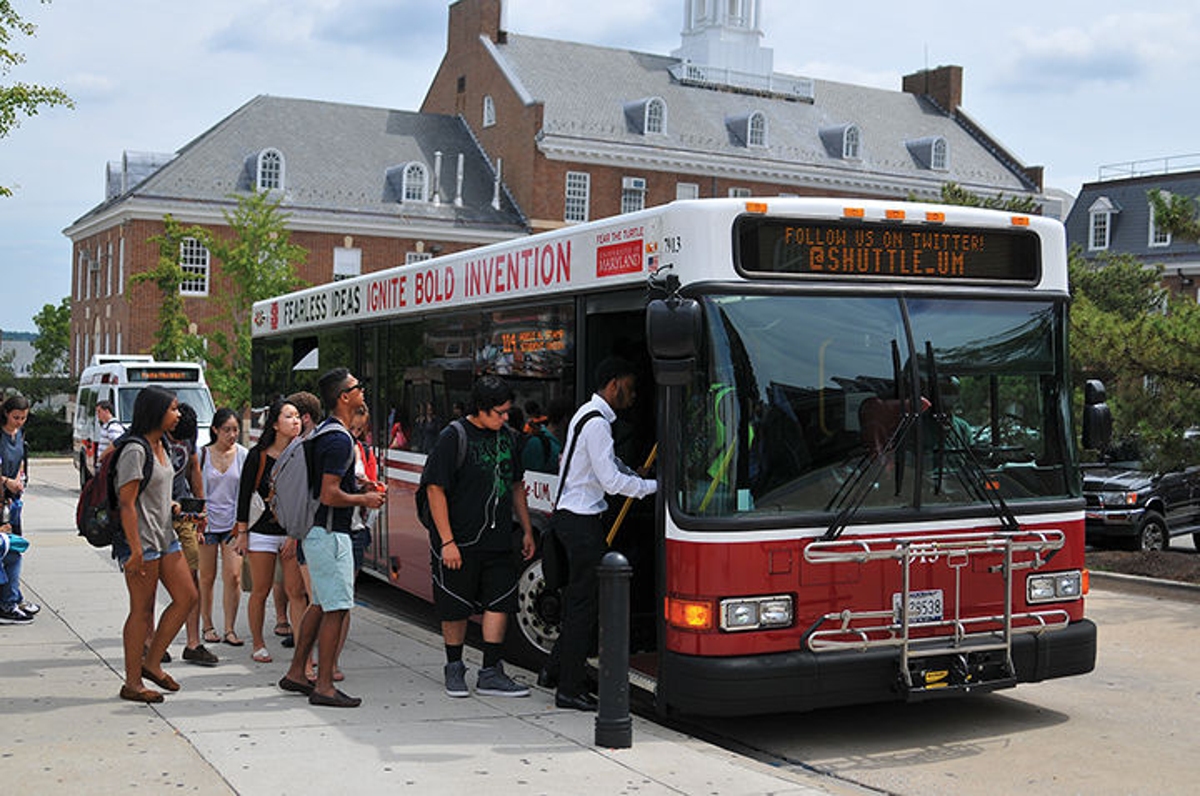DOTS will pilot an expanded 104 Shuttle-UM bus route to the College Park Metro Station starting this summer after the department received student feedback that the route does not adequately serve South Campus.
The 104 bus route to the Metro station currently runs from Regents Drive Garage around the “M” circle, down to Route 1 and out to the station, said David Allen, Department of Transportation Services director. The new route, which will have a slightly longer wait time between buses, will run straight on Regents Drive — past the main administration building, Memorial Chapel and Annapolis Hall — before turning left onto Route 1 and continuing to the Metro, Allen said.
The Student Government Association and Residence Hall Association both have advocated for expanded bus service to the Metro station. The RHA passed a resolution this month urging DOTS to implement a new route connecting South Campus to the Metro, while the SGA will consider a similar resolution in the coming weeks.
“Those who pay get a lot of say,” Allen said. “The students pay for this service, so we’re willing to pilot it and see how it works for the fall semester.”
Expanding the bus service to the Metro could make commuting easier for students who intern in Washington and the surrounding areas, particularly upperclassmen, who often live on South Campus, said Katherine Swanson, the SGA vice president of student affairs. Many students pursue these opportunities during academic semesters because of this university’s proximity to Washington, she said.
“People on this campus go to D.C. all the time,” said Swanson, a junior government and politics major. “We’ve heard multiple complaints from people on this campus who are interning, saying that they don’t use this bus and that it’s not helpful to them because to walk to the Regents [Drive] Garage is not convenient at all.”
Senior Joshua Trowell, who walks about 10 minutes to the College Park Metro from his Frederick Hall dorm to get to his internship at Children’s National Health System in Washington, said the current 104 bus route is not readily accessible for students living on South Campus. However, he noted he would be interested in using the bus if it stopped closer to his dorm.
If the bus “reached South Campus or hit one of the spots here, that would be great,” the community health major said. “Even though South [Campus] is so close to the Metro, it will be awesome if there was a stop that just goes straight from South [Campus] to the Metro station.”
Senior community health major Andrea Safirstein drives about 20 minutes to get to her internship with the Food and Drug Administration in Silver Spring this semester. The drive is much more convenient than her commute last year, when she took the Metro to an internship with the Arthritis Foundation in Bethesda, she said.
“If [the College Park Metro Station] was in a more central location, a lot of people would be more motivated to go into D.C. and have internships,” she said.
DOTS does have some concerns that the new route might lead to overcrowded buses and longer wait times, Allen said. The department will already be eliminating one bus from the 104 route during peak times next year as a cost-cutting measure, running three buses instead of four, he said.
With the reduced number of buses and a longer route, headways — the amount of time it takes a bus to go through its entire route — could increase from four or six minutes during peak time to more than 10 minutes, said Armand Scala, DOTS associate director.
But the department is optimistic that students will like the changed route, Scala said.
“If the RHA and [SGA] are both excited about this, we’re hoping the student body as a whole is as well, so we’re hoping ridership goes up,” Scala said. “The only real negative would be if people don’t like it and stop riding it.”
Allen said DOTS will “keep track” of these issues during the summer and fall pilot periods.



